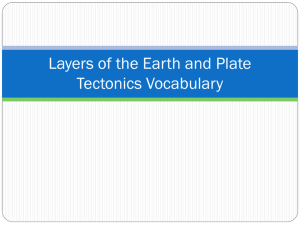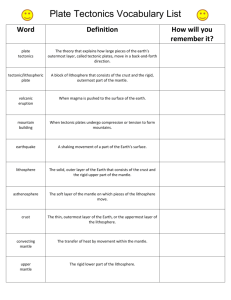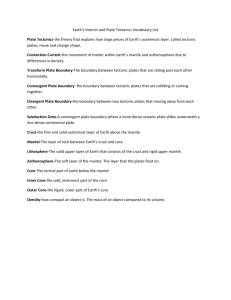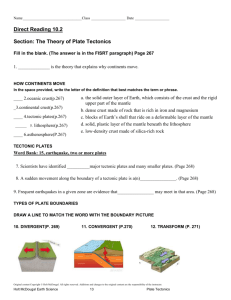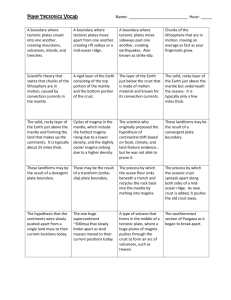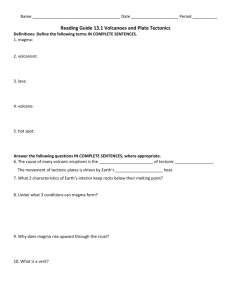CDA Study Guide-Inside the Earth
advertisement
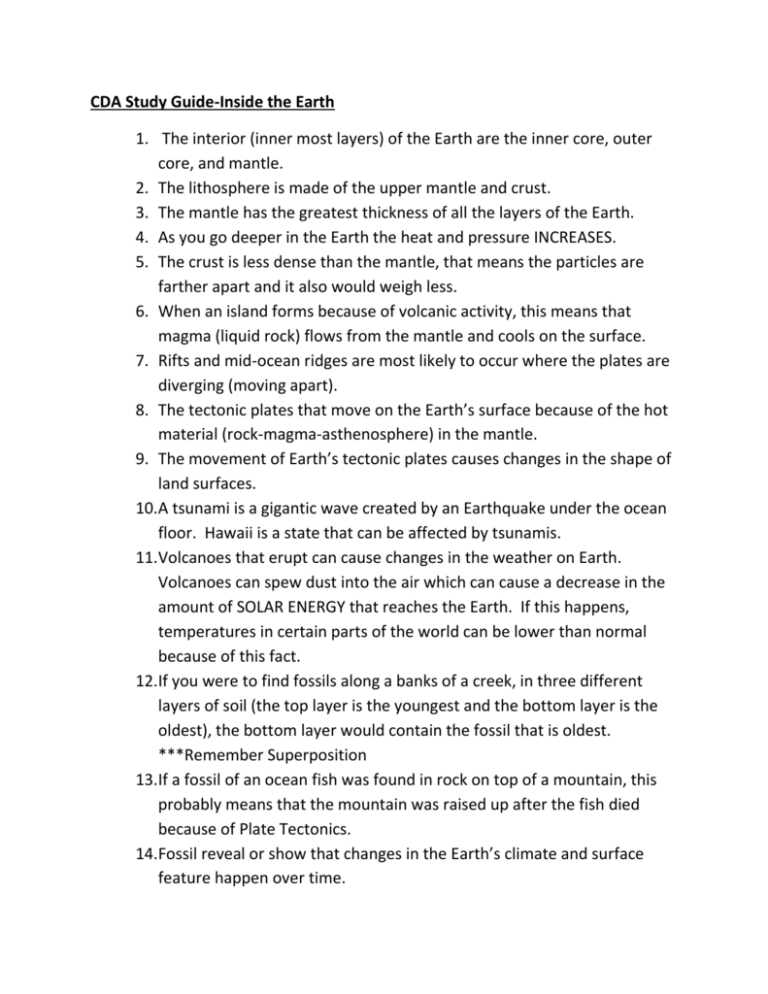
CDA Study Guide-Inside the Earth 1. The interior (inner most layers) of the Earth are the inner core, outer core, and mantle. 2. The lithosphere is made of the upper mantle and crust. 3. The mantle has the greatest thickness of all the layers of the Earth. 4. As you go deeper in the Earth the heat and pressure INCREASES. 5. The crust is less dense than the mantle, that means the particles are farther apart and it also would weigh less. 6. When an island forms because of volcanic activity, this means that magma (liquid rock) flows from the mantle and cools on the surface. 7. Rifts and mid-ocean ridges are most likely to occur where the plates are diverging (moving apart). 8. The tectonic plates that move on the Earth’s surface because of the hot material (rock-magma-asthenosphere) in the mantle. 9. The movement of Earth’s tectonic plates causes changes in the shape of land surfaces. 10.A tsunami is a gigantic wave created by an Earthquake under the ocean floor. Hawaii is a state that can be affected by tsunamis. 11.Volcanoes that erupt can cause changes in the weather on Earth. Volcanoes can spew dust into the air which can cause a decrease in the amount of SOLAR ENERGY that reaches the Earth. If this happens, temperatures in certain parts of the world can be lower than normal because of this fact. 12.If you were to find fossils along a banks of a creek, in three different layers of soil (the top layer is the youngest and the bottom layer is the oldest), the bottom layer would contain the fossil that is oldest. ***Remember Superposition 13.If a fossil of an ocean fish was found in rock on top of a mountain, this probably means that the mountain was raised up after the fish died because of Plate Tectonics. 14.Fossil reveal or show that changes in the Earth’s climate and surface feature happen over time. 15.If you found a fossil of a palm tree in Alaska, this would show that the CLIMATE of Alaska was once warmer than it is now. 16.Alfred Wegener hypothesized (came up with an educated guess), that there was once a gigantic supercontinent named Pangaea that existed about 200 million years ago, and identical fossils are located directly opposite each other on widely separated continents (South America and Africa). 17.When two tectonic plates slip past each other, like along transform boundaries and strike-slip faults, Earthquakes are mostly likely to happen or occur here. 18.The crust of the Earth (lithosphere) is a thin, hard, outer layer of the Earth made of various minerals. 19.Volcanic activity (volcanoes being formed and erupting), can shape the lithosphere by raising mountains and adding rock from cooling magma. 20.When an oceanic plate and a continental plate CONVERGE (move together), subduction (subsidence) will happen and the most dense plate will move below the less dense plate because it is heavier. The oceanic plate usually moves below the continental plate.


